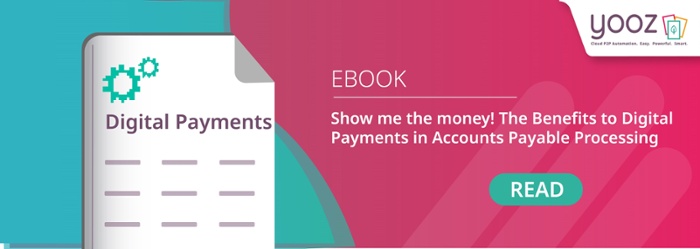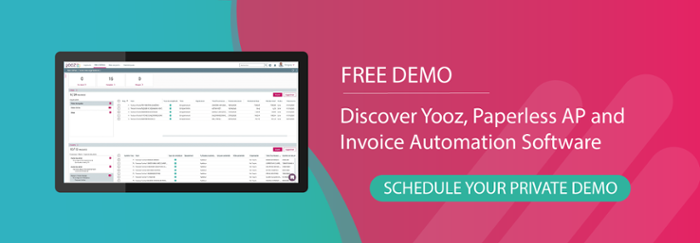When it comes to effective financial planning, having the ability to accurately estimate future revenue and expenses is key to protecting the business against any potential disruptions. And, because Accounts Payable (AP) represents your short-term liabilities (those expected to be paid off within a month or a year), accurately predicting your expenditures is necessary to present a clear picture of the amount of cash available in the organization.
This makes forecasting Accounts Payable one of the most important, complex, and challenging tasks of any company's financial management process. After all, factors that determine expenditures - things like understanding supplier needs, planning for future payments, and properly determining other expenses - are all essential factors to running a successful business. While doing this can be hard enough for a single location, imagine how complicated it can get with multiple sites spread across several locations, including continents.
When it comes to doing the forecasting itself, the process is typically based on actual data that measures how successful the business was in executing past budgets. For this reason, the more accurate the available data, the better the prediction, and the better chance that you don't spend more than you make in either the short- or the long-term. And, while this can and has been historically a manual process, one of the ways to make the process easier is to have access to automated forecasting tools such as accounts payable automation software.
Let's examine how automation can simplify the process of forecasting and budgeting AP costs as well as some of the benefits and challenges involved.
What is Forecasting Accounts Payable and Why is it Important?
The main role of forecasting Accounts Payable is to predict future expenses and payments to decrease any unexpected disruptions to a company's cash flow. It helps companies to:
-
Understand the timing of future payments. If you know when you'll need to pay for something, it helps ensure that sufficient funds are available when the bills are due. This in turn helps avoid late payments, overdraft fees, and possible supplier relationship complications.
-
Track how much money is being spent on supplies and inventory to help ensure that they stay stocked.
-
Develop benchmarks for future forecasts.
For these reasons and more, forecasting Accounts Payable is an important tool in accurate budgeting, predicting profitability, and managing costs. An accurate AP forecast will help to better evaluate business progress, implement any changes, and streamline growth.

Steps for Forecasting Accounts Payable
It is difficult to accurately predict exactly what an organization's Accounts Payable balance will be at any given time in the future. However, there are several steps that you can take to estimate the balance as accurately as possible.
The basic three steps are to:
- Analyze historical data,
- Identify trends and seasonality factors, and
- Use regression analysis (a statistical way to sort out which variables have an impact) to forecast future cash flows.
The resulting information will show you any fluctuation in sales volume and over what period it occurred. You'll be able to see things such as what happens on a regular basis and if there is any reason for it. For example, purchasing tends to increase before the Christmas holidays. This happens on a regular yearly basis so it is predictable.
You'll also be able to get payment information for each vendor. For example, if you know what vendor provides which service and when, you can better plan for an early invoice payment and easily avoid any late fees.
Best Practices for Accurate AP Forecasting
Some of the best practices for forecasting accounts payable include:
- Understand the company business model and how it generates revenue. Otherwise, you are operating in a vacuum.
- Know your payables processes and policies, such as how many days it takes on average to pay vendors.
- Know your customers and suppliers.
- Review historical Accounts Payable data, including various trends between periods and across any vendors.
- Identify any significant changes over time or among groups (such as vendors), then determine the reason behind it (such as a change in payment terms).
- Determine any known upcoming event that may have an impact, such as a large purchase order from a regular monthly or yearly event.
The good news? Having an end-to-end automated AP process can help with all the above!

How Accounts Payable Relates to Budgeting
How does forecasting and Accounts Payable relate to the budget process? A budget balance statement sheet is a financial document that represents a company's spending plan based on future revenue and expenses. It's an estimate detailing how much money is allocated for any particular purpose over a set period of time. A budget can be made for anybody spending money, from a single person to a global business, and for any amount of income.
While Accounts Receivable (AR), another part of the budget process, refers to the money owed to the company and therefore is considered assets, Accounts Payable is a line item on the balance sheet which, as mentioned above, represents a company's short-term liabilities or debts. Since it represents future cash outflows - legally obliged payments by the company - it is a key piece to the overall company operating budget. Obviously, for planning purposes the organization needs to have sufficient funds to pay its debts.
Forecasting Accounts Payable with Automation
When it comes to doing the forecasting process, there are two approaches to take: manual or automated. While it is certainly possible to manage all the paperwork and planning by hand, mistakes can easily be made that result in delays or worse. Benefitting from technology and turning to automation - specifically AP automation - helps by making the process more effective, efficient, and less resource intensive. It eliminates roadblocks such as slow processing and incorrect data entry, removes the possibility of lost or misfiled papers, and with a cloud platform such as Yooz provides on-demand, real-time access to both past and present data for improved strategic decision-making.
Because an automated process can accurately collect data so much faster than a manual one, automation serves as a base for more thorough reporting and decision-making. This in turn offers the ability to better forecast future payables (based on actual historical data), in turn giving companies a better idea of the upcoming budget. It also enables the company to know the immediate status of any invoice (and therefore able to answer supplier questions), ensures that invoice data is correct in the system (reducing fraud and payment errors), and creates a digital audit trail (helping to stay in compliance with any regulations or legislation).
Simply put, automation provides accurate and up-to-date information which improves forecasting. This in turn helps a company budget more effectively, track capital for efficiently, and therefore plan better for the future.
Benefits of Forecasting using Accounts Payable Automation
Accounts Payable automation streamlines the invoice process from purchase to payments, helping companies to better track - and therefore forecast - their cash flow. It eliminates many of the challenges found in the manual Accounts Payable process, including human errors resulting from manual data entry (such as matching errors), delayed or lost documents, slow approvals, missed discounts, late payments, and late payment penalties.
Eliminating these challenges means that forecasting using AP automation also overcomes the biggest challenge faced by any accounting department: obtaining accurate numbers. Whether from a lack of good tools available or because there are insufficient resources to (manually) collect information from multiple locations and departments in an organization, forecasting based on inaccurate information will result in an inaccurate forecast.
Instead, automation provides companies with benefits such as the ability to:
- Centralize information: Information is consolidated into a single location that provides real-time, on-demand historical data on spending patterns. This information can then be used to accurately reflect spending habits over any defined period.
- Reduce costs: Traditional costs such as paper usage and storage are reduced or minimized, and excess manual processing time is eliminated.
- Eliminate late fees: Automation reduces the chances of missing a payment deadline, whether by error or by having insufficient cash available. As a result, late fees are eliminated.
- Improved relationships: Vendor relationships are improved by having the ability to ensure on-time payments (even automating payments for reoccurring charges) and provide information on demand.
- Optimize cash flow: An accurate forecast helps to maintain a healthy working capital ratio, optimizing how much remains to spend on company growth and expansion.
It should be note that either a manual or automated AP process can be affected by economic uncertainty and unpredictable factors such as inflation and sudden supply chain interruptions. After all, while you can always estimate based on current conditions, it is harder to account for others (just consider the unplanned for effects from the COVID-19 pandemic).
What Can We Conclude
Accounts Payable automation helps to make financial forecasting more accurate, efficient, and cost-effective. It eliminates the errors and waste that correspond with a manual, paper-based accounting process, is a great way to consolidate all the information required to forecast, and as a result reduces the time and effort required to budget for invoice payments. You can increase accuracy while saving time, money, and resources... All while eliminating errors resulting from using a manual process.






